Weekly round-up: 05 - 11 Aug 2015
Classic British summer conditions prevailed this past week, with the usual mixture of fine sunny days and rain pushing in off the Atlantic. It felt decidedly old school, and the birds duly delivered with what’s fast-becoming a real blast-from-the-past August passerine.
Seawatchers claimed some modest prizes as the week wore on, but the highly anticipated mega wader failed to materialise. There’s plenty of time yet though...
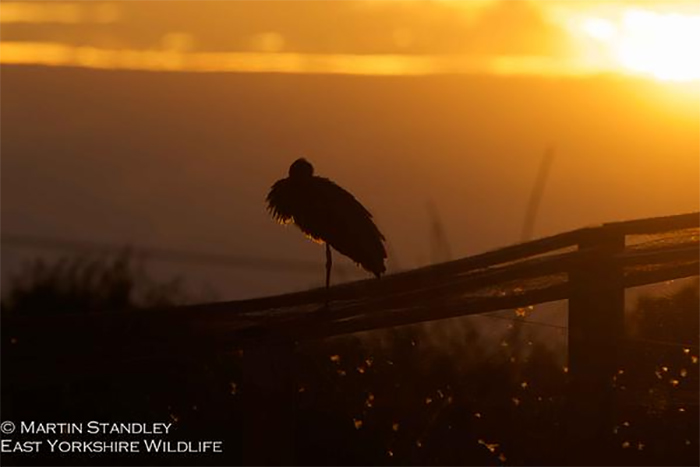
As noted by my Norfolk counterpart last week, August records of Black Stork aren’t wholly unexpected. Three birds in one day last week was certainly notable though – but who would have foreseen the plethora of records we enjoyed this week in what definitely qualifies as a mini-influx?
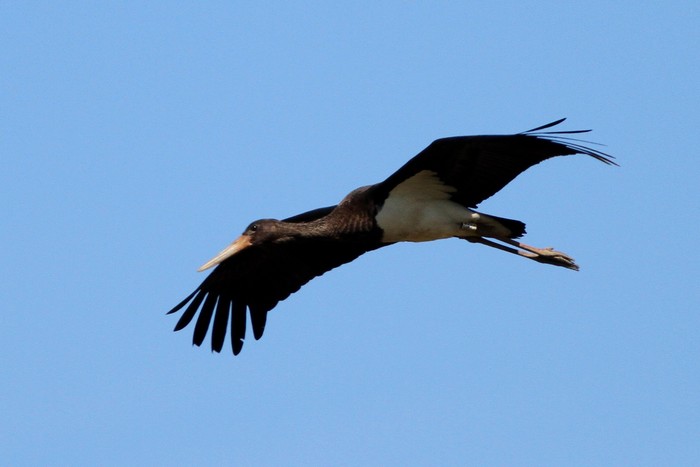
The week kicked off with the individual found last week at Spurn still finding East Yorkshire very much to its liking. This white-ringed French juvenile remained in the area all week long. Meanwhile on 5th three more definite birds were logged in the UK – one was seen passing over Mickleby and the Wykeham Forest raptor viewpoint (North Yorkshire); one passed high west over Cley (Norfolk); and one was lobbing around Gibraltar Point (Lincolnshire) – with a further possible individual reported from Doxey Marshes NR (Staffordshire). Wowsers.
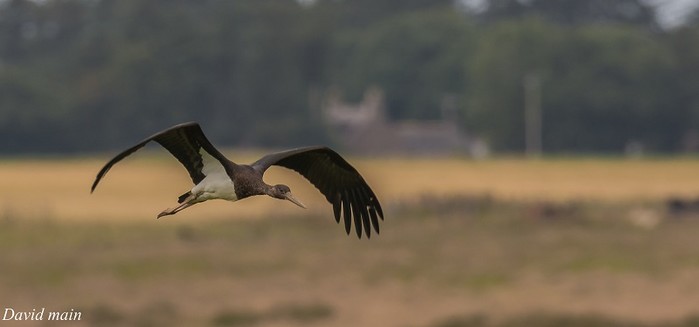
The Lincolnshire bird was to settle and remain until 8th, with presumably the same bird wandering nearby on 11th; and this was by far from the end of the week’s Black Stork happenings. On 6th one was discovered much further north, at Loch of Strathbeg RSPB in Aberdeenshire – another juvenile, and also bearing a white French ring – it transpired this was a sibling of the Spurn bird, both ringed at the same nest in the Ardennes on June 3rd. This latter individual remained at Loch of Strathbeg all week too, only the second record for Aberdeenshire – the first was way back in 1998 on the Ythan Estuary, coincidentally being my first British sighting of this charismatic species. That particular bird was also noted in Highland, Northumberland and Suffolk reminding us, as if we needed telling, of the species’ ample capacity for getting around a bit.
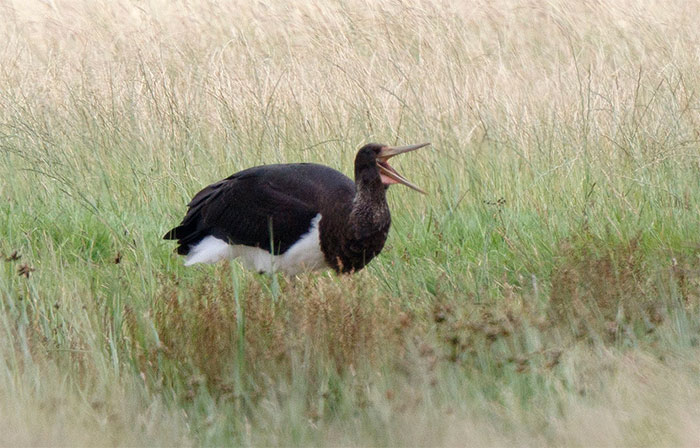
Meanwhile, on 7th two birds made the headlines – one was at the very edge of the south coast, cruising around the Dungeness area in the late morning and early afternoon; and one flew north over Saltburn (Cleveland) in the evening. Were we finished? Well, no, not really...
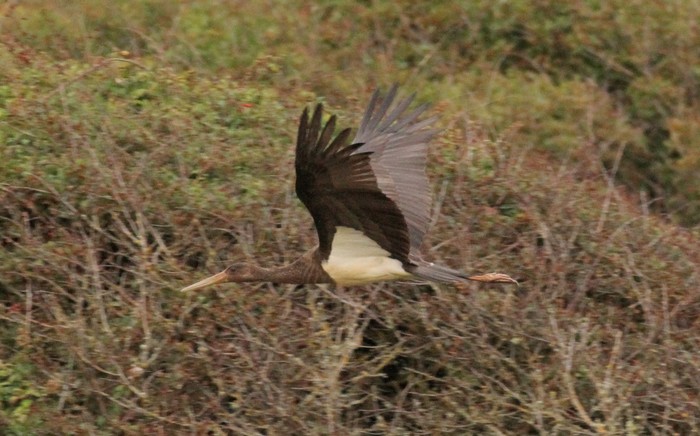
...’cos on 8th, further west along the south coast what should turn up at Middlebere in Dorset but a(nother?) Black Stork, remaining in the area until 9th. It or another was circling over Portland on 11th, flirting with the idea of heading out to sea before heading north inland over Radipole RSPB. This presumably was the same bird seen in the evening of 11th in West Bexington.
The times they are a-changing – and never was that classic line more true than where some rare birds are concerned. Time was when we thought Fea’s (a.k.a Soft-plumaged) Petrel was the stuff of impossible rarity (and sometime fevered imagination) and Aquatic Warbler was a bread’n’butter year-list padder at Marazion on your way to one of Cornwall’s seawatching hotspots.
Indeed, these were the halcyon pre-internet days when you picked up your birding rag of choice and marvelled at the double figure tallies of those gorgeous lemony stripy Acros trapped and ringed in Dorset’s Poole harbour.
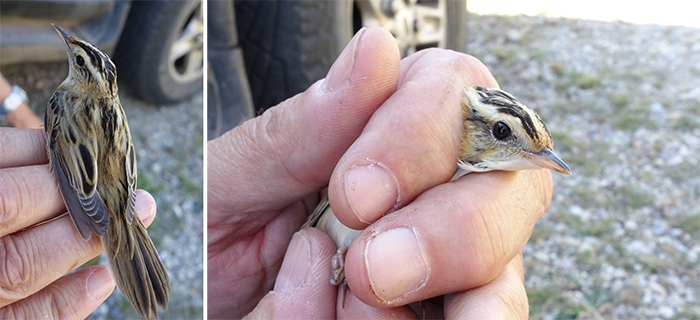
(These were the same birding magazines in which Yellow-breasted Buntings featured strongly every year... and we all know what’s happened to them).
So too with Aquatic Warblers - they’re definitely not as relatively common as once they were – dropped by the BBRC way back in 1982 - and being a bit skulky they’re still more likely to turn up in a ringer’s nets than in some random juncus in front of you. That said, we should duly doff our caps to Mr Golley and his excellent crystal ball gazing skills last week...
News of one trapped and ringed in Suffolk at Orford Ness on 9th would therefore qualify as not wholly unexpected, but increasingly noteworthy in a national context. At a county level, this was electrifying news – the last Suffolk birds were way back in late August 2003, an adult and a juvenile trapped and ringed on consecutive days at... Orford Ness. This was a classic “right place, right time” bird for county listers, and only those within a metaphorical gnat’s whisker of Orford Ness were able to add this most recent bird to their Suffolk lists.
Suffolk missed out on the past largesse of the species and this week’s bird was only the 8th record for the county following the first back in 1976.
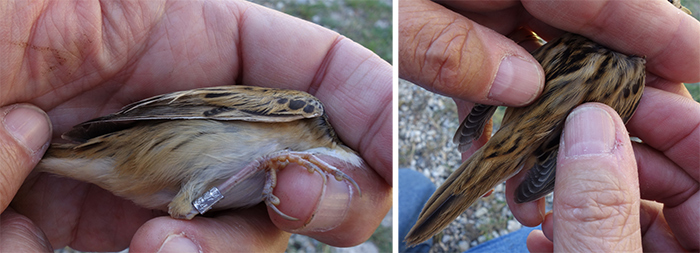
Will we be seeing any more this autumn? Maybe, but probably not many. This is starting to feel like a species that’s a modest blocker in the making. And that’s not a good thing on any level.
Sticking with the theme of long overdue repeat passerine showings, the brief Black-headed Bunting at Cornwall’s Nanjizal Valley on 8th was only the 6th for the county and the first since 2000. Which, despite sounding like only yesterday is, to my increasing horror, a full 15 years ago... Fully 80% of those previous Cornish records have been in late May, with just one bird (the first county record) hailing from October 1985.
(Practically ancient history, that one).
While bucking the Cornish trend, 20 previous national August records for Black-headed Bunting show it’s far from atypical in these balmy pre-autumn proper days, with a good mix of past first-winter and adult birds alike; this attractive bunting should remain high on any coastal rarity finder’s agenda at this time of year.
While past records show a firm bias towards the Northern Isles prior August records from the Isles of Scilly in 1958, Kent in 1973, Dorset in 1974 and (a fabulous blocker, this) London in 1986 all provide hope for those in the south – as does this very latest bird in Cornwall.
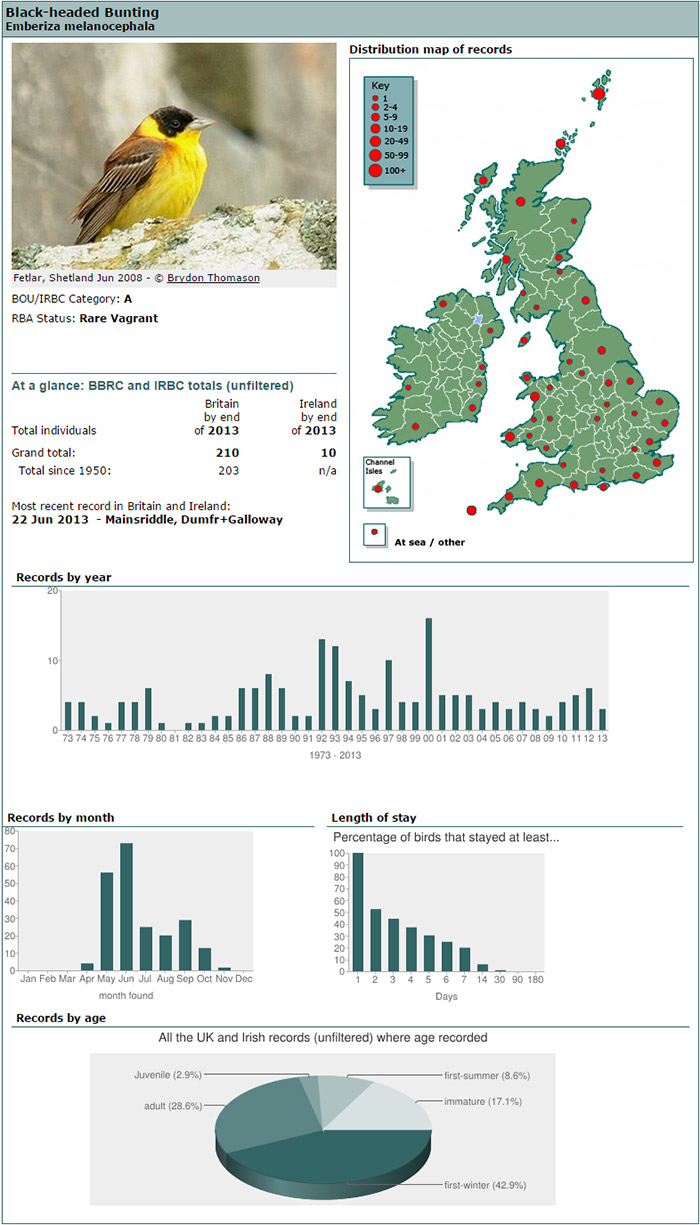
As noted earlier on, time was when Fea’s Petrel was thought of as Soft-plumaged Petrel, and represented the stuff of serious fantasy. They still do, of course, but actually seeing one feels a lot more of a possibility these days as they’re now recorded annually in British and Irish waters.
You could be forgiven for feeling that, if you put yourself in the right place (Irish or Cornish headland / Irish, Cornish or Scilly pelagic) at the right time (August), and the planets align favourably for you, one of these once mythical beasts could hove into your field of view. The very thought makes the hairs go up on the back of my neck.
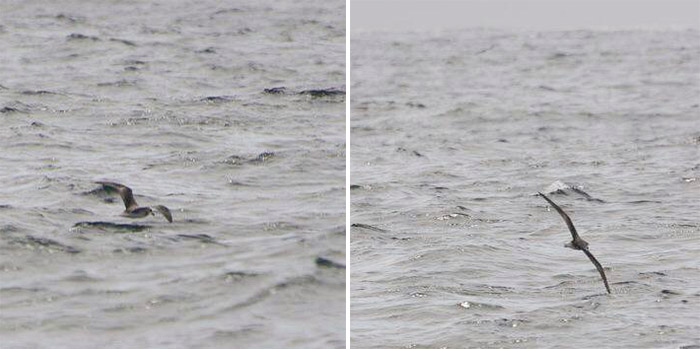
(The very thought of the seasickness I might have to endure to make that actually happen makes my gorge rise ever so slightly too. It was such cowardice that saw me give away my ticket for the 2001 Scillonian pelagic at the quayside itself. But you know what they say: faint heart never won fair Pterodroma).
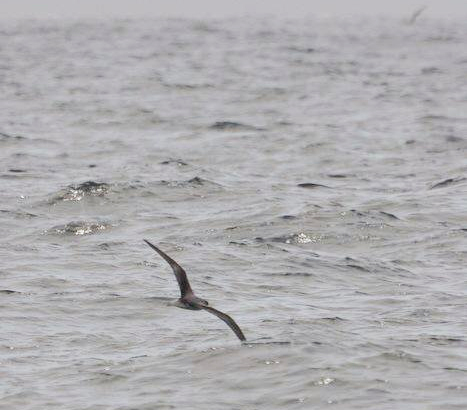
And Ashley Fisher’s footage of the very first acceptable record off Scilly remains one of the most gripping birding videos. Ever.
This week began with a Fea’s / Zino’s Petrel reported passing Porthgwarra (Cornwall) early in the morning on 5th. Later on Ireland landed itself a slice of the action with a Fea’s seen at sea on a pelagic south of Toe Head (Co.Cork) on 9th.
There’s always that sense on these pelagics that the unthinkable might just happen. Happily, sometimes it does.
Mm. There was a fair bit of action over the chum-slick that’s our early August Seabirds section this week, though big numbers have yet to materialise. Plenty of time for that yet – this week there was certainly some variety with all the usual suspects to report.
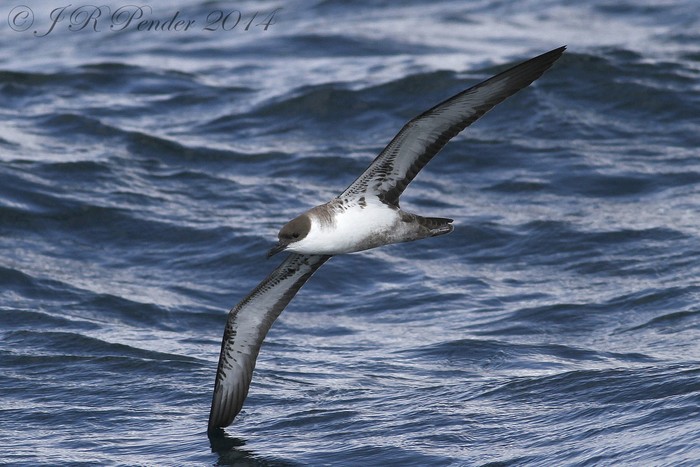
Starting with the ‘big shears’, Porthgwarra’s regulars had six Great Shearwaters pass on 5th, one on 9th and two on 10th; while the Lizard returned one on 5th. The regular Scilly pelagic accounted for one on 8th, three on 9th and at least five on 10th. And so to Ireland – singles were off Helvick Head (Co.Waterford) on 5th and Cape Clear (Co.Cork) on 7th; two passed Galley Head (Co.Cork) on 9th, with 4 and 5 birds seen during pelagics off Co.Cork that day also.
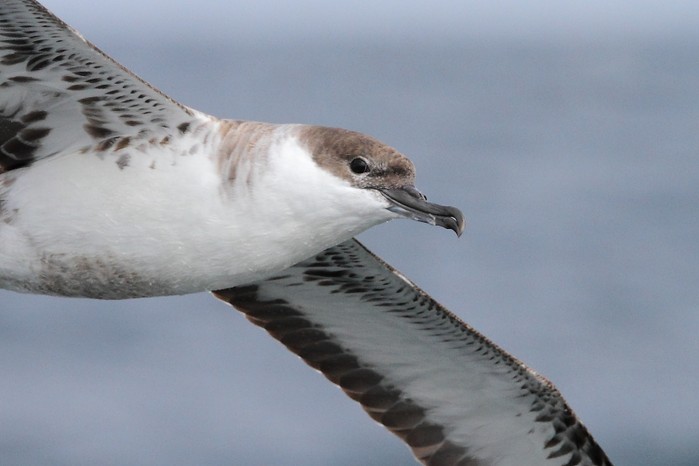
Moving to Cory’s Shearwaters we have similarly modest numbers to report – in Cornwall three passed the Lizard on 5th, two were off Porthgwarra on 10th, and the Scillonian crossing accounted for sightings on 7th and 10th. Scilly itself provided two from a pelagic on 6th. Moving to Ireland, and Co.Cork in particular, two singles passed Knockadoon Point on 5th; a single was off Brow Head on 6th; and one was off Barley Cove on 10th.
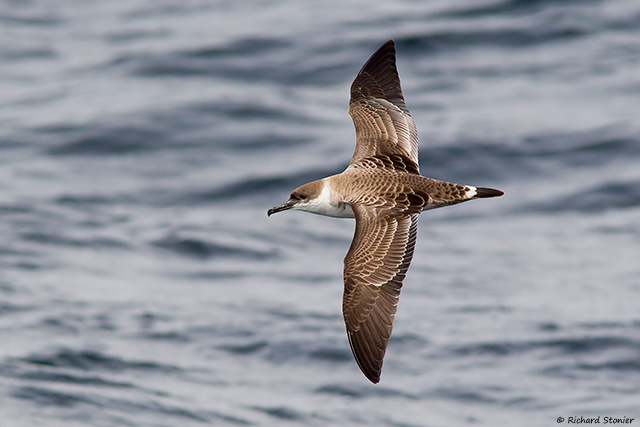
North of 300 Balearic Shearwaters were tallied this week from four English and five Irish counties, with Devon enjoying the lion’s share of them – around half the week’s total came from Berry Head alone, with 118 there on 5th and 42 on 10th. Other notable double figure tallies came from Porthgwarra, the Lizard and Bass Point (Cornwall) with 24, 15 and 20 birds respectively on 5th; and Portland (Dorset) with 12 on 6th.
Long-tailed Skuas scraped into double figures (just) this week, with Scilly dominating proceedings – clearing the east coast to begin with, one was off Kilnsea (East Yorkshire) on 7th, with one reported from Norfolk on 8th off Holme Dunes. Moving west, two were noted off Bass Point (Cornwall) on 5th. And so to the brilliant Scilly pelagic, where individuals were noted on 8th (a single bird), 9th (three birds) and 10th (two birds). Meanwhile Ireland accounted for singles on 5th off Knockadoon Head (Co.Cork) and Helvick Head (Co.Waterford), one on 10th off Bridges of Ross (Co.Clare), and one on 11th from a pelagic off Dingle (Co.Kerry).
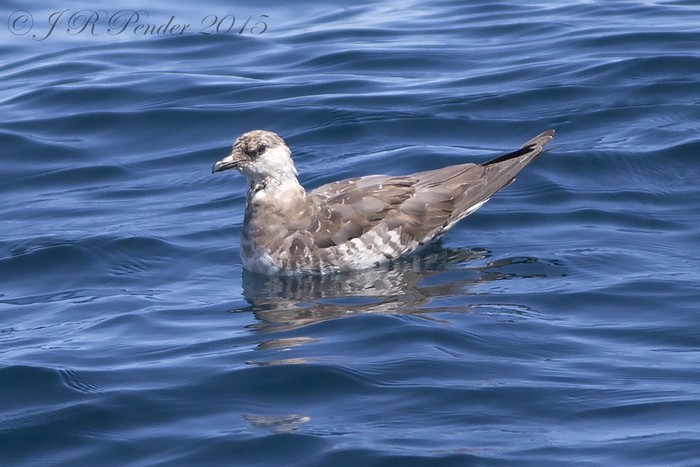
Around 30 Pomarine Skuas were logged from five Irish, eight English and two Scottish counties. Most involved single birds, but trios were seen off the Lizard and Bass Point (Cornwall) on 5th, with four birds that day off Helvick Head (Co.Waterford) and three from a pelagic off Dingle (Co.Kerry) on 11th.
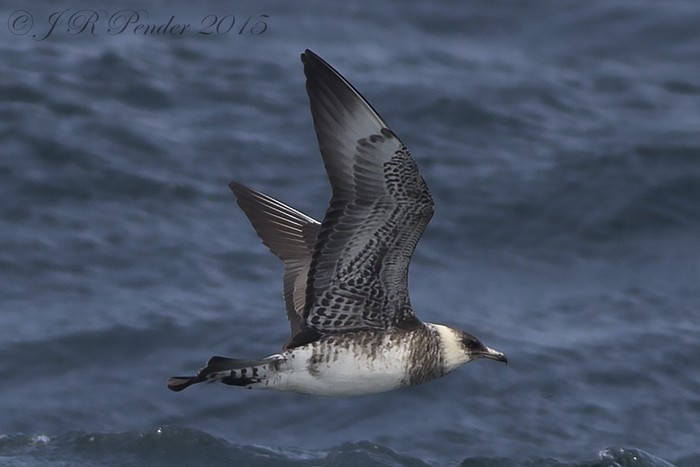
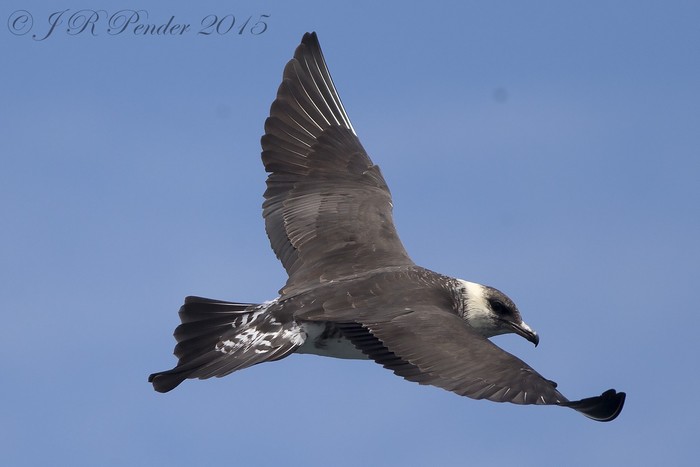
Once again this week it was tape-luring that turned up the bulk of the week’s Leach’s Petrels two of the three logged in the past seven days were found this way on 9th at Marske-by-the-Sea (Cleveland) and Whitburn Coastal Park (Co.Durham). One was off Cape Clear (Co.Cork) on 8th.
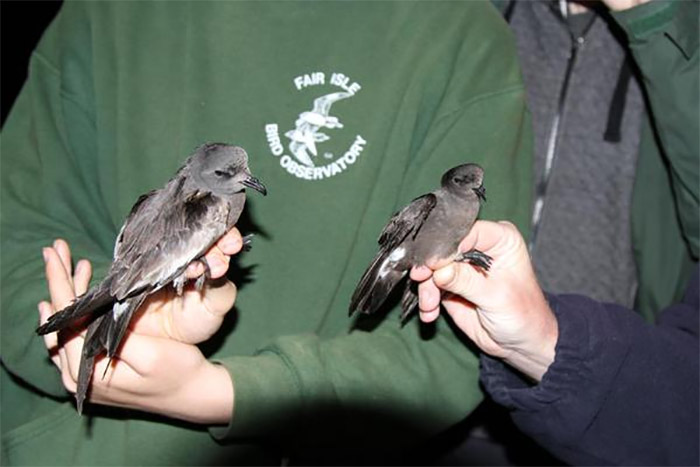
The first of the autumn’s Wilson’s Petrels made a welcome appearance at sea this week, three noted off Toe Head (Co.Cork) on 9th. The first, but surely not the last in coming days.
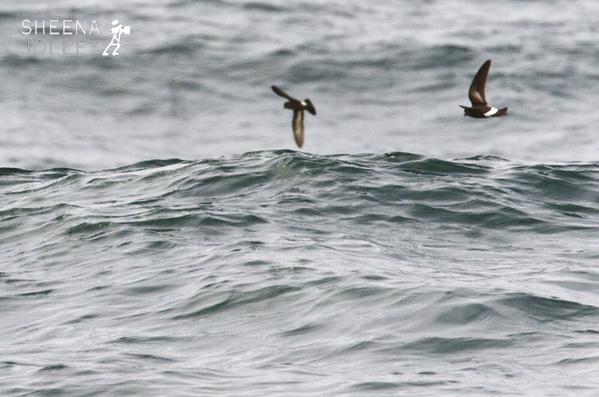
And welcome one and all to the Great White Egret-less long-legged beasties section. It’s like coming home after your summer holidays and finding your house has been turned over by really helpful burglars who’ve made off with some perfectly serviceable but nonetheless untidy ornaments you’ve been gathering for years and years to the point where they were taking over the living room.
I like the refreshed look of the place, though the massive Spoonbill collection is starting to bother me. I’ll leave the front door unlocked when I’ve finished this week’s Round-Up and see what happens...
More on them in due course. First of all we’ve got a date with a Purple Heron - the first-summer bird in Suffolk, to be precise; where the settled bird remained on King’s Fleet until 11th. A further possible bird was reported on 7th in Norfolk at Whittlingham CP and a bird made landfall on the Suffolk coast on 11th at Carlton Marshes having been taken into care on board a boat 26km south of Southwold earlier in the afternoon.
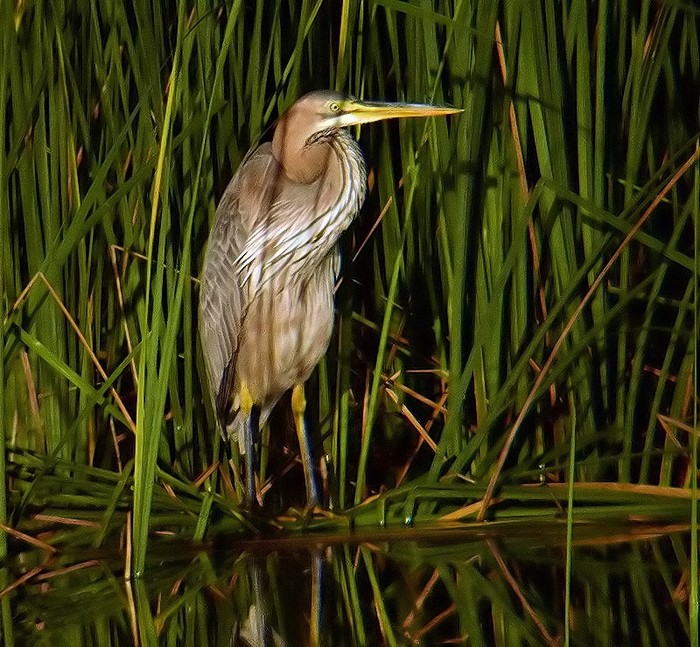
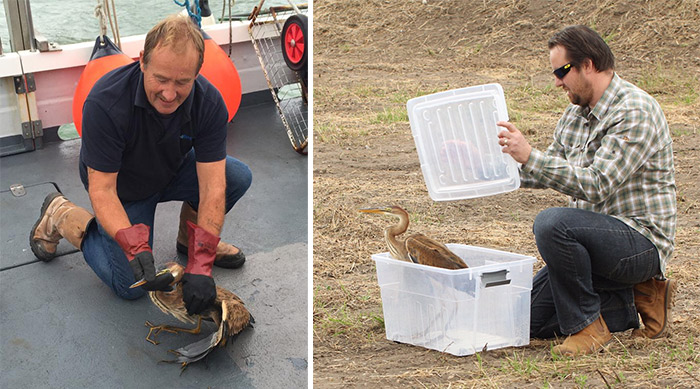
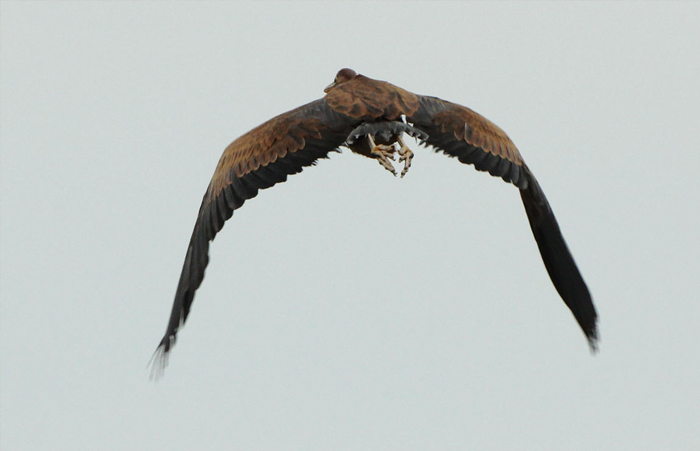
Further unconfirmed possibility emerged from the ether on 10th with news of a possible White Stork in Brecon (Powys) on the River Usk.
And so we come to those Spoonbills... Plenty of ‘em again this week, people. Norfolk dominated proceedings once again with birds a fixture at Titchwell all week long, with a peak count of 20 on 9th. Elsewhere Stiffkey accounted for 25 birds on 6th; four were at Cley on 6th, and Breydon Water RSPB held a modest two birds until 11th.
Things weren’t too shabby in Lincolnshire either, with birds present week-long at Gibraltar Point, with peak counts of 14 there on 5th-6th and 16 birds on 11th. Six were at Alkborough Flats on 6th, with four there on 8th; one was Frampton Marsh RSPB again on 8th, with three there on 10th.
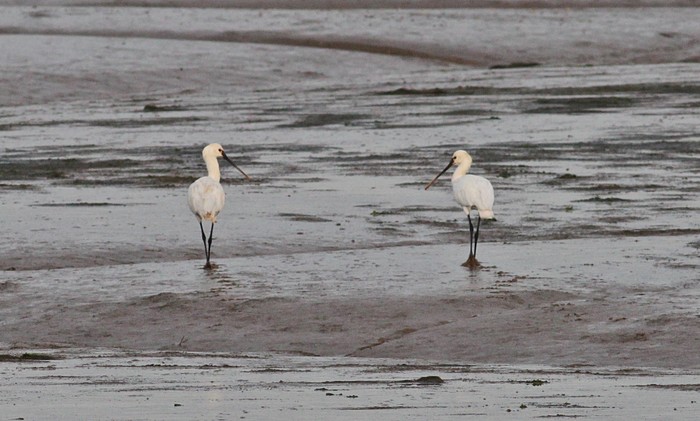
Two birds remained at Cresswell Pond NWT (Northumberland) on 5th, with one at Blacktoft Sands (East Yorkshire) that day also. Over in Lancashire one was mooching around the Conder and Lune estuaries from 7th-11th while in Wales one was again at the National Wetlands Centre near Llanelli (Carmarthenshire) on 11th.
Finally, down towards the south coast via Suffolk, where three birds were at Hazlewood Marshes SWT on 11th, we’ll start in Kent where 12 birds were seen over Sheppey from the Faversham side of the fleet on 8th, and two birds were on Scotney GPs on 6th-9th. Dorset’s Middlebere held two birds from 6th onwards with three there on 8th. We finish up in Cornwall where a single bird was seen at Kingsmill Lake briefly on 8th, with one on the Hayle Estuary on 8th-9th.
Away from Norfolk there were a few Common Cranes enlivening proceedings – two remained on private land at Potter Brompton (North Yorkshire) on 6th-7th; one was at Blithfield Reservoir (Staffordshire) on 9th-11th; and one was seen over the M6 at Charnock Richard (Lancashire) on 10th. In Ireland three birds were at Ardfert (Co.Kerry) on 7th.
Keeping with the “early autumn in days of yore at Marazion” vibe the Suffolk Aquatic Warbler conjures up this week, we’ve got a handful of Spotted Crakes to report – one again at Titchwell (Norfolk) again on 10th-11th; one singing in Cheshire at Burton Mere Wetlands RSPB on 5th; and one at Blacktoft Sands RSPB (East Yorkshire) on 11th.
Summer 2015 is neither a good time for rare wildfowl nor visiting Australian cricketers – the former returned considerably more ducks than this week’s Rarity Round-Up, where we have just the one lone duck for your delectation – the Somerset drake Lesser Scaup still present on Blagdon Lake all week.
Australians can draw some solace from the fact that their conservation workers are evidently more talented than their national cricket team – news broke this week that the Night Parrots first reported in 2012 were more than the wishful thinking some had suggested they might be – in a major conservation coup one was trapped and fitted with a tracking device earlier this year.
In a relatively quiet week for shorebirds the week’s star bird remained frustratingly ephemeral on 5th, with a report of a probable Broad-billed Sandpiper never quite coalescing into a definitive identication.
More tangible were the week’s four adult White-rumped Sandpipers - we’re in peak time for these American strays – one remained at Beacon Ponds (East Yorkshire) until 7th, one was at Hickling Broad (Norfolk) on 9th-10th, while on 11th one was at Titchwell RSPB (Norfolk) and a final bird was in Kent at Oare Marshes NR.
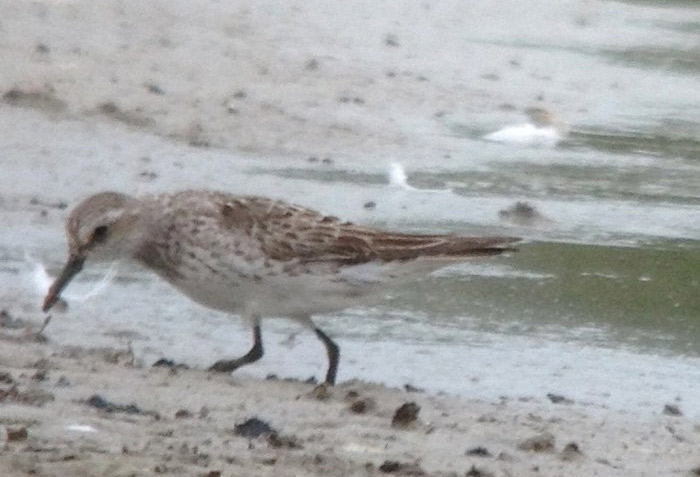
Numbers of Pectoral Sandpipers were good again this week with a respectable half dozen logged. The adult remained on Porth Hellick pool (Scilly) until 6th; another adult was at Bothal Pond (Northumberland) on 6th-9th. One was reported again from Thorne Moors NNR (South Yorkshire) on 7th; on 8th on was at Greathham Creek (Cleveland), with another on 8th-11th at Tetney Marshes (Lincolnshire). On 9th-10th one was at Kilnsea Wetlands (East Yorkshire).
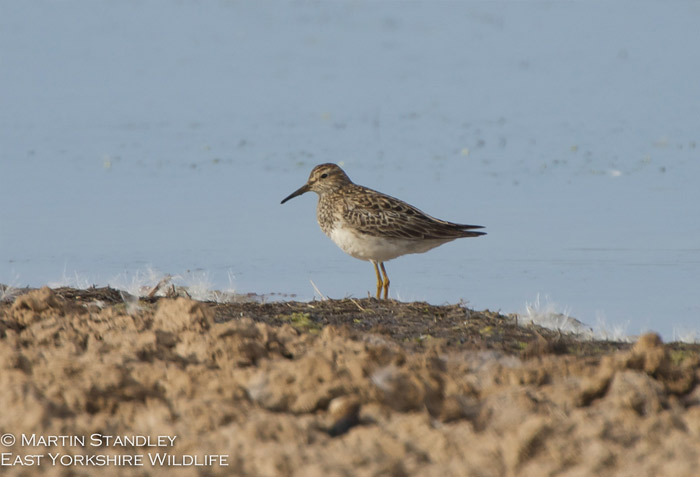
A couple of pelagic Grey Phalaropes were logged at sea from a boat off Clonakilty (Co.Cork) on 8th. There’ll be many a seawatcher and pelagic birder hoping for more of these in the coming days.
Following last week’s fleeting Caspian Tern in Essex, this week it was Norfolk’s turn (pun intended) to notch up a brief record of this chunkiest of Sterna - one was briefly at Holme Dunes in the morning of 9th.
In another nod to last week’s news, after Spurn had enjoyed a moulting adult Whiskered Tern on 4th, this week it was the turn (nope, still not getting old that one) of Dungeness (Kent) to enjoy a flyby of a moulting adult on 6th.
Further hot tern action and variety came in the form of that summer stalwart, White-winged Black Tern - a juvenile was at Westport Lake in Staffordshire on 8th; with a juvenile at Beacon Ponds (East Yorkshire) on 9th.
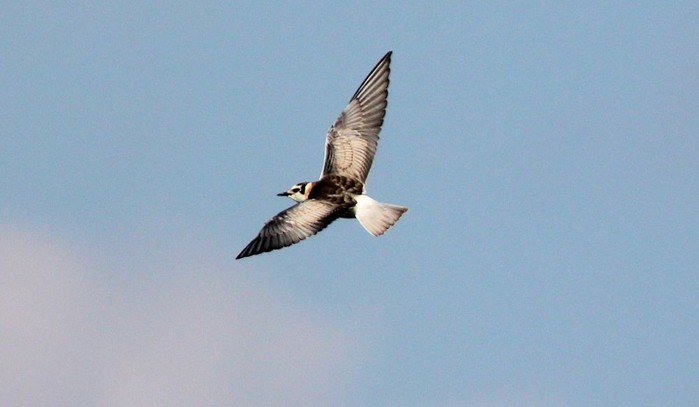
Back in Kent we find the summering adult Bonaparte’s Gull still finding Oare Marshes KWT very much to its liking until 9th. A report of a first-summer bird in Dorset on 11th at Hengistbury Head remained wholly unconfirmed.
The first stirrings of winter were to be felt where Ring-billed Gulls were concerned, with numbers picking up this week. A very respectable five first-summers were logged this week – English birds were the faithful individual in Cornwall on the Hayle Estuary, and last week’s discovery still present at Preston Dock (Lancashire), both birds seeing the week out; while in Ireland individuals were noted at Belfast Lough RSPB (Co.Antrim) on 8th, Lissagriffin (Co.Cork) on 9th, and again at Tralee Bay Wetlands (Co.Kerry) on 10th.
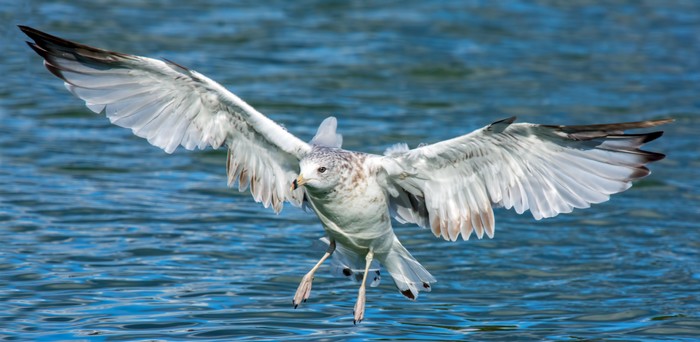
In another slim week for white-wingers it fell to Iceland Gull to make the merest ripple on the surface of the Gulls and Terns paragraphs – a probable bird was reported from Newport (Pembrokeshire) on 7th, and a first-summer was at Lissagriffin (Co.Cork) on 9th.
We finish this week with a flourish and a perennial crowd-pleaser and crowd-puller where circumstances allow – the gorgeousness that’s Sabine’s Gulls. Whatever the age, these are tasty birds – a metaphor almost taken literally by a resident Northern Pike at Pennington Flash (Manchester) on 9th when it tried to take out the lingering and popular bird that remained there all week.
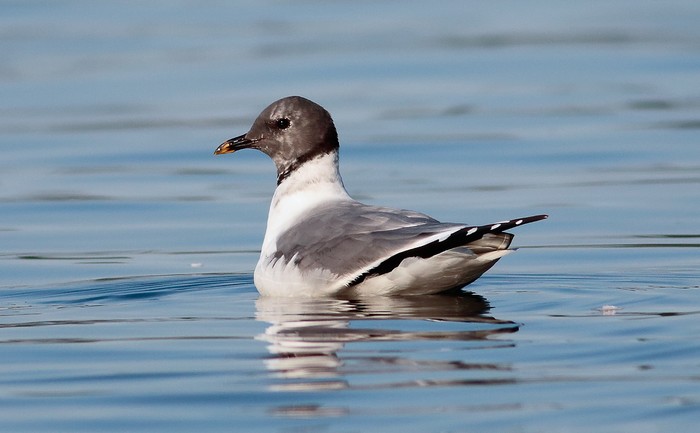
Further adult Sab’s were seen on 5th off Flamborough Head (East Yorkshire) and Filey (North Yorkshire); at Kinneil Lagoon (Forth) on 6th; past Tiree (Argyll) on 9th; and on 10th from the Scillonian crossing and off Bridges of Ross (Co.Clare). A first-summer was on the mussel beds at Musselburgh Lagoons (Lothian) in the evening of 10th.
Fast becoming our collective equivalent of the British media’s annual summer reports of big cats at loose in the British countryside / flocks of marauding killer seagulls / something about Princess Diana is a report of an Eleonora’s Falcon. Sure enough, there was one reported this week heading over Oare Marshes (Kent) on 8th.
And here’s the thing... very, very occasionally escaped exotic cats are found as roadkill, a Herring Gull will mug you for your chips or as an act of territorial defensiveness despatch a small dog or two and, as for Princess Diana...well, the Daily Mail and Express really need to move on. And very, very occasionally one of those Eleonora’s Falcons gets photographed and is hence proven to have been the real deal all along.
Eventually one’s going to be pinned down somewhere for a day or two and more than just the lucky finder will get to see it. We’re none of us holding our breath though that it’ll be any time soon...
Still hanging on in there this week was the first-summer male Red-footed Falcon in Staffordshire at the Chatterley Whitfield Colliery, present there until 8th.
Familiar faces in the most part where Montagu’s Harriers were concerned this week, with a ringtail again at Gibraltar Point (Lincolnshire) on 5th; and the male and newly fledged juvenile again during the week at Blacktoft Sands RSPB (East Yorkshire). More unusual, but becoming increasingly part of our birding scene these days were the birds logged by their satellite data – a juvenile recorded at Cottered (Hertfordshire) on 6th, and a second-summer female near Selham (West Sussex) on 7th.
Meanwhile, as today is the so-called ‘Glorious Twelfth’ amongst those who appear to think it’s a jolly lark and proof of their sporting prowess / virility to shoot driven Red Grouse on intensively managed grouse moors across the country, spare a thought if you will for Britain’s beleagured Hen Harriers - with yet another illegal killing of a Hen Harrier confirmed this past week.
Shame on you, shooting estates. And shame on those who, by participating in this most unsporting of country sports, tacitly condone the illegal persecution of our country’s natural heritage.
Let’s all do something about it – take a moment to email the link to the official petition to ban driven grousing shooting (petition.parliament.uk/petitions/104441) to your family, friends and colleagues. Explain why you feel strongly about this, and why they might feel strongly about it too. And explain how signing the petition takes but a moment of their time, but how every single signature counts.
And on a brighter note, let’s finish with some Honey Buzzards - individuals were noted on 7th at New Romney (Kent); on 8th at Dungeness and St. Mary Hoo (Kent also), Kirkton of Logie Buchan (aberdeenshire) and Nosterfield LNR (North Yorkshire), with two birds reported at the latter site; on 9th back in Kent at St. Margaret’s at Cliffe and in Norfolk at Wells-next-the-Sea; and on 11th when individuals were seen over Capel Fleet (Kent) and Titchwell (Norfolk).
It’s still the calm before the storm where passerines are concerned, with one or two modest highlights to report again this week. Not least of course the breeding Bee-eaters confidently predicted in these columns some weeks ago when the influx began – and I still fancy there may be another breeding attempt out there somewhere too... The public domain birds in Cumbria remained at Gelt Quarry with two adults there daily, and three noted on 10th.
Elsewhere two counties that featured strongly during the early days of the influx again returned records this week – both Kent and Suffolk seeing four birds recorded on 5th at Deal and Minsmere RSPB respectively; one was reported that day in Lincolnshire at Alkborough Flats. On 7th one flew over Lincolnshire’s Gibraltar Point, and another flyover passed over Spurn (East Yorkshire), with a further probable bird noted back in Kent at Kingsdown. On 11th one was heard at Tittesworth Reservoir near Butt Beach (Staffordshire).
The lingering Paddyfield Warbler continued to hold residence in the sheltered nook that’s the warden’s cottage garden on the island of Noss until 11th, taking its Shetland summer holiday to a very respectable 21 days duration. At this rate it’ll be here to greet the first of Shetland’s visiting autumn birders...
Two Melodious Warblers were found on 11th in the southwest, one trapped and ringed in Cornwall at Nanjizal Valley, and the other in Dorset on Studland Heath.
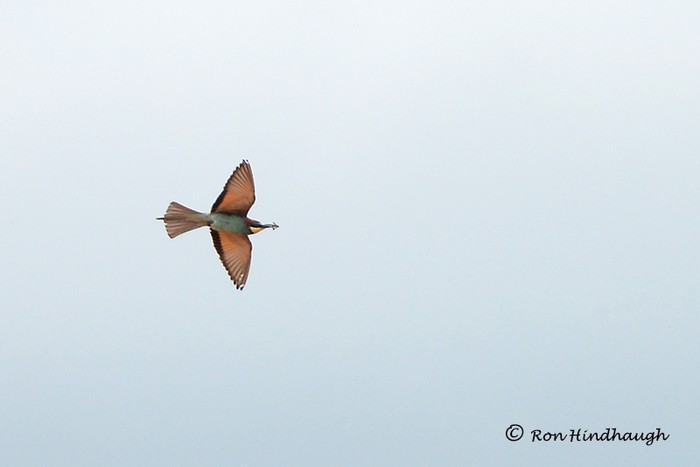
An Alpine Swift cut a dash over Horsey (Norfolk) on 5th; on 6th a Red-rumped Swallow was at High Island (Co.Galway).
A Hoopoe was in Somerset at Withywood on 6th; on 11th further birds were in Kent at Pegwell Bay and in Ireland at Waterford (Co.Waterford).
In West Sussex a Wryneck was in a garden in East Harting on 9th.
A female Red-backed Shrike was in Essex at the close of the week, at Bowers Marsh RSPB on 10th-11th. Happy news broke earlier in the week that a pair had bred at an undisclosed site in Shetland, fledging four young this summer.
A male Woodchat Shrike was reported on 7th at Dunoon (Argyll) though the sighting remained unconfirmed.
More traditional late summer colour came in the form of two Rose-coloured Starlings, the near-adult still in Wales at Aberavon (Glamorgan) on 5th, and an adult on Harris at Luskentyre (Western Isles) on 10th.
A final glimmer of summery passerine goodness came from Languard (Suffolk) on 7th where the male Serin was once again seen.
And that was the week that was. We’re firmly in the heart of monster seabird and shorebird territory in the coming week, as a glance at the recent past glories readily reminds us.
Who could, for example, forget the Red-billed Tropicbird that flew under (almost) everybody’s radar at Pendeen (Cornwall) on 18th August 2013? One that, to be fair, most of those present at Pendeen Watch would sooner forget – but sometime, eventually, one of these dandy seabirds is going to be multiple-observed from a headland or a pelagic trip in British and Irish waters.
More Fea’s and Wilson’s Petrels seem like a certainty this week; and speaking of certainties, from the shorebird offerings it’d be a brave birder who bets against further White-rumped Sandpiper action in the coming days.
With both Greater and Lesser Sand Plovers displaced near and far in the Western Palearctic last week, and with past form for both in the coming days, either of these funky waders seems like a decent bet from further leftfield. There’s all manner of shorebird loveliness that’s turned up in the past to draw inspiration from, but I’ve got a good feeling about Stilt Sandpiper...
(Though I often have a good feeling about my lottery numbers, and they’ve not come up... yet).
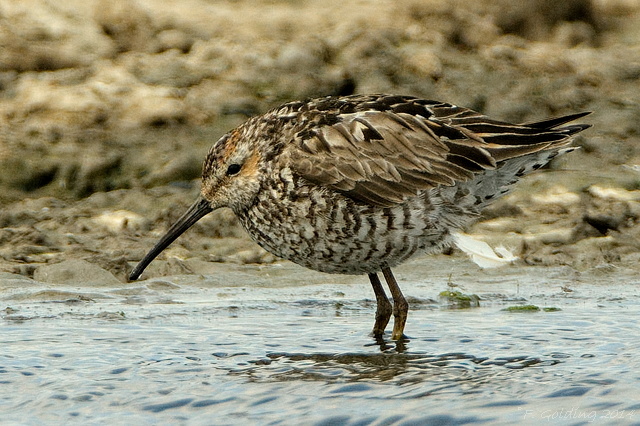
Going really out on a limb, it’s coming to be that time of year when a really, properly monster warbler comes out of the Shetland woodwork: Ruppell’s Warbler on 13th August 1977 (remaining there well into September), and remarkably in the very same garden on 16th August 2006, an Olive-tree Warbler – the latter there for all too short a period and, at the time, mooted as an Eastern Olivaceous Warbler. Returning that very day to Shetland from a funeral in Cornwall, I decided to not bother to stop and see ‘another’ Eastern Olly... and so I drove blithely past it on my way home.
There’s a lesson in there somewhere. Probably best viewed as a narrow miss, as I’d have doubtless have had some awkward soul-searching to do had I seen it and learned of it’s true identity after the event – it was only from Hugh Harrop’s sequence of photos taken at the time that this bird was retrospectively identified.
I’d really like a go at another one. Or a twenty-years-and-still-waiting-for-another-one Ruppell’s. And I know I’m far from alone in that!
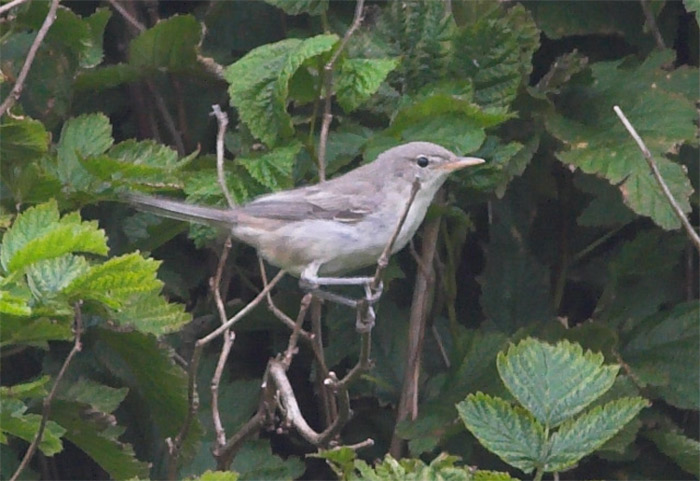
Jon Dunn
12 Aug 2015












